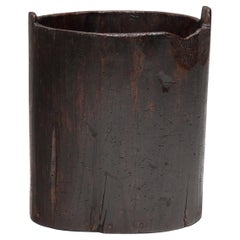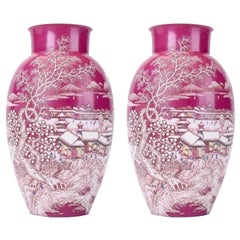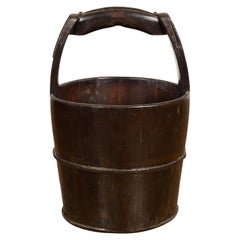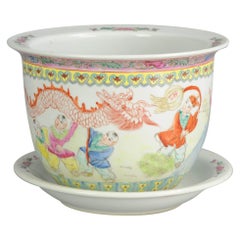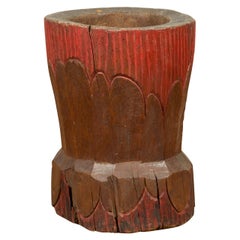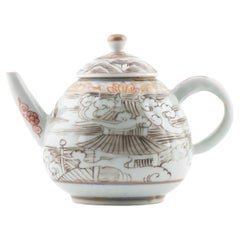East Asian Planters, Cachepots and Jardinières
Early 20th Century Organic Modern East Asian Planters, Cachepots and Jardinières
Wood
2010s Modern East Asian Planters, Cachepots and Jardinières
Porcelain
Early 20th Century Qing East Asian Planters, Cachepots and Jardinières
Metal
20th Century East Asian Planters, Cachepots and Jardinières
Porcelain
19th Century Rustic Antique East Asian Planters, Cachepots and Jardinières
Wood
18th Century Edo Antique East Asian Planters, Cachepots and Jardinières
Porcelain
Early 20th Century Qing East Asian Planters, Cachepots and Jardinières
Ceramic
17th Century Ming Antique East Asian Planters, Cachepots and Jardinières
Porcelain
Late 19th Century Antique East Asian Planters, Cachepots and Jardinières
Porcelain
19th Century Qing Antique East Asian Planters, Cachepots and Jardinières
Porcelain
2010s Modern East Asian Planters, Cachepots and Jardinières
Porcelain
20th Century East Asian Planters, Cachepots and Jardinières
Porcelain
18th Century Qing Antique East Asian Planters, Cachepots and Jardinières
Porcelain
Mid-19th Century Edo Antique East Asian Planters, Cachepots and Jardinières
Metal, Bronze, Copper
Late 19th Century Antique East Asian Planters, Cachepots and Jardinières
Brass
20th Century Chinese Export East Asian Planters, Cachepots and Jardinières
Teak
1960s Hollywood Regency Vintage East Asian Planters, Cachepots and Jardinières
Brass
Early 20th Century Qing East Asian Planters, Cachepots and Jardinières
Ceramic
Early 19th Century Rustic Antique East Asian Planters, Cachepots and Jardinières
Granite
20th Century Meiji East Asian Planters, Cachepots and Jardinières
Bronze
Mid-20th Century Chinese Export East Asian Planters, Cachepots and Jardinières
Ceramic
Late 19th Century Qing Antique East Asian Planters, Cachepots and Jardinières
Soapstone
Early 19th Century Minimalist Antique East Asian Planters, Cachepots and Jardinières
Granite
Early 20th Century East Asian Planters, Cachepots and Jardinières
Ceramic
19th Century Qing Antique East Asian Planters, Cachepots and Jardinières
Wood
Early 20th Century Qing East Asian Planters, Cachepots and Jardinières
Ceramic
1880s Chinese Export Antique East Asian Planters, Cachepots and Jardinières
Porcelain
15th Century and Earlier Han Antique East Asian Planters, Cachepots and Jardinières
Pottery
Mid-20th Century Country East Asian Planters, Cachepots and Jardinières
Ceramic
Mid-19th Century Rustic Antique East Asian Planters, Cachepots and Jardinières
Limestone
Late 19th Century Primitive Antique East Asian Planters, Cachepots and Jardinières
Wood
17th Century Edo Antique East Asian Planters, Cachepots and Jardinières
Porcelain
Early 20th Century Qing East Asian Planters, Cachepots and Jardinières
Ceramic
Early 1900s Chinese Chippendale Antique East Asian Planters, Cachepots and Jardinières
Marble
Early 20th Century Qing East Asian Planters, Cachepots and Jardinières
Ceramic
2010s Greco Roman East Asian Planters, Cachepots and Jardinières
Porcelain
Early 20th Century Organic Modern East Asian Planters, Cachepots and Jardinières
Ceramic
17th Century Ming Antique East Asian Planters, Cachepots and Jardinières
Porcelain
Mid-20th Century Qing East Asian Planters, Cachepots and Jardinières
Terracotta
20th Century Mid-Century Modern East Asian Planters, Cachepots and Jardinières
Ceramic
18th Century Qing Antique East Asian Planters, Cachepots and Jardinières
Porcelain
1920s Vintage East Asian Planters, Cachepots and Jardinières
Pottery
Mid-20th Century East Asian Planters, Cachepots and Jardinières
Ceramic
Late 19th Century Meiji Antique East Asian Planters, Cachepots and Jardinières
Metal, Bronze
2010s Greco Roman East Asian Planters, Cachepots and Jardinières
Porcelain
1880s Antique East Asian Planters, Cachepots and Jardinières
Bronze
20th Century Meiji East Asian Planters, Cachepots and Jardinières
Cast Stone
Early 20th Century Qing East Asian Planters, Cachepots and Jardinières
Ceramic
18th Century Qing Antique East Asian Planters, Cachepots and Jardinières
Porcelain
Early 19th Century Qing Antique East Asian Planters, Cachepots and Jardinières
Limestone
20th Century East Asian Planters, Cachepots and Jardinières
Porcelain
Mid-20th Century East Asian Planters, Cachepots and Jardinières
Iron
19th Century Antique East Asian Planters, Cachepots and Jardinières
Metal
Early 20th Century Taisho East Asian Planters, Cachepots and Jardinières
Wood
Early 20th Century Meiji East Asian Planters, Cachepots and Jardinières
Brass
Early 20th Century Qing East Asian Planters, Cachepots and Jardinières
Iron
Early 20th Century Rustic East Asian Planters, Cachepots and Jardinières
Terracotta
1880s Antique East Asian Planters, Cachepots and Jardinières
Bronze
1930s Vintage East Asian Planters, Cachepots and Jardinières
Bronze
Early 20th Century Qing East Asian Planters, Cachepots and Jardinières
Porcelain
Read More
8 Ways to Breathe New Life into a Space with Plants
The pair behind the Instagram account @houseplantclub share their tips for making any room of the house gloriously green.
10 On-Point Vessels for Flaunting Your Houseplants and Bouquets
Whether you're a genius gardener or have your florist on speed dial, every stem in your home deserves the best.
How to Decorate with Plants
The vegetation in these six living rooms is lush yet discreet enough that they won't be mistaken for greenhouses.
